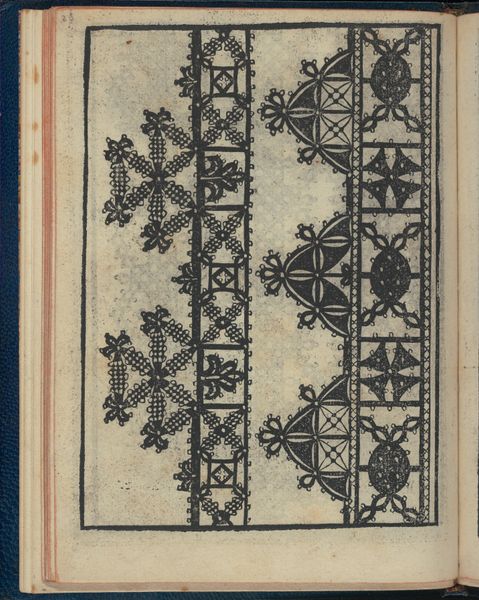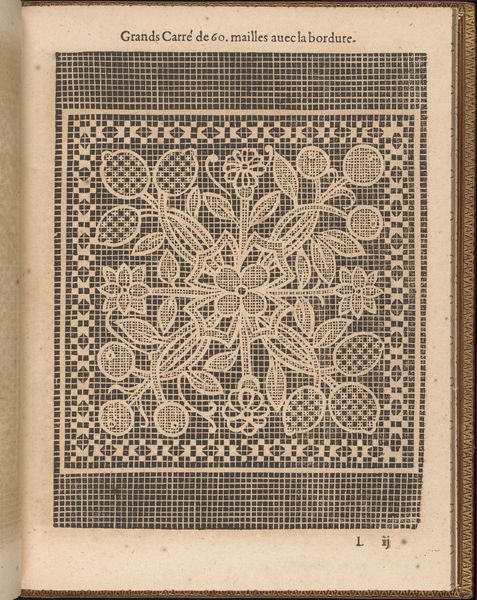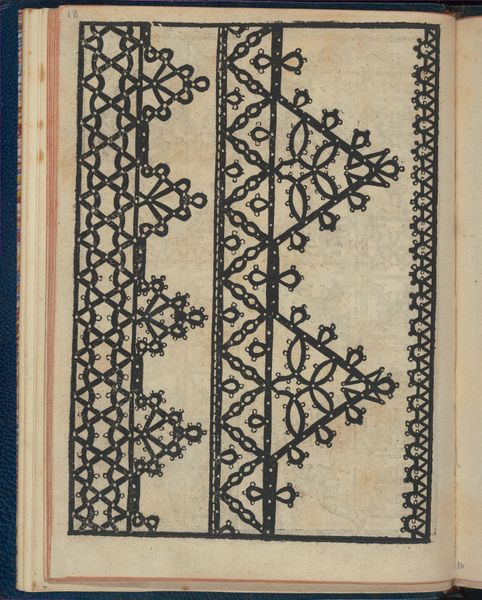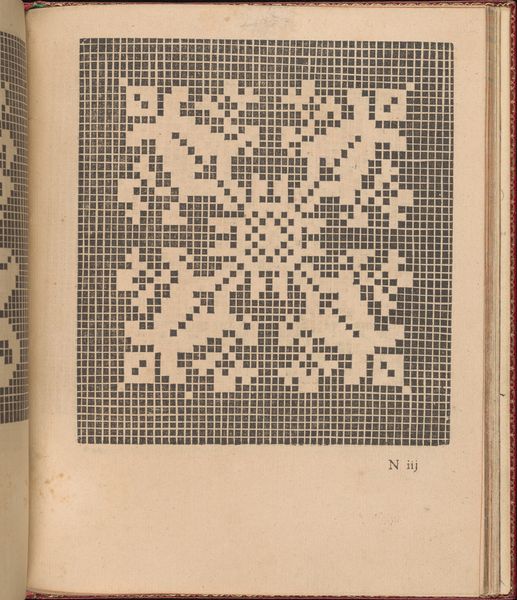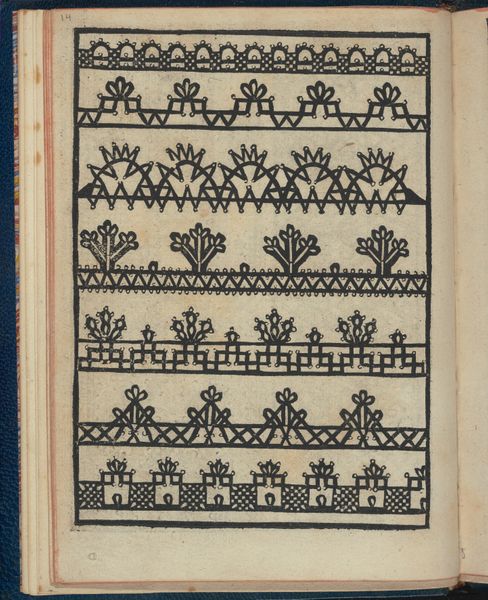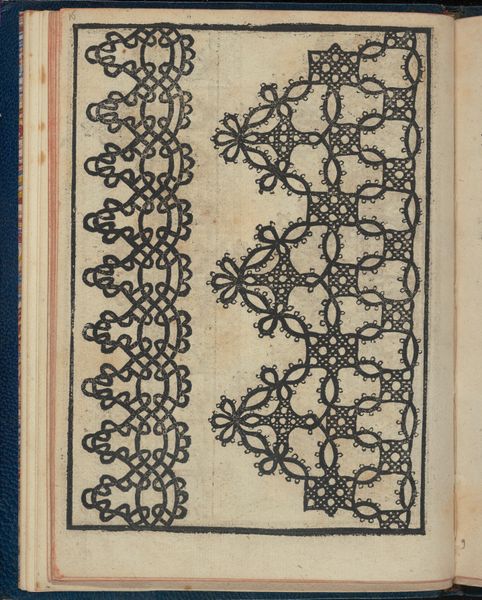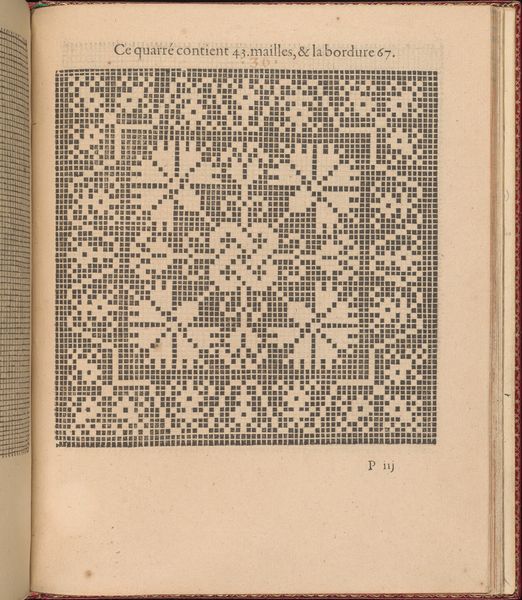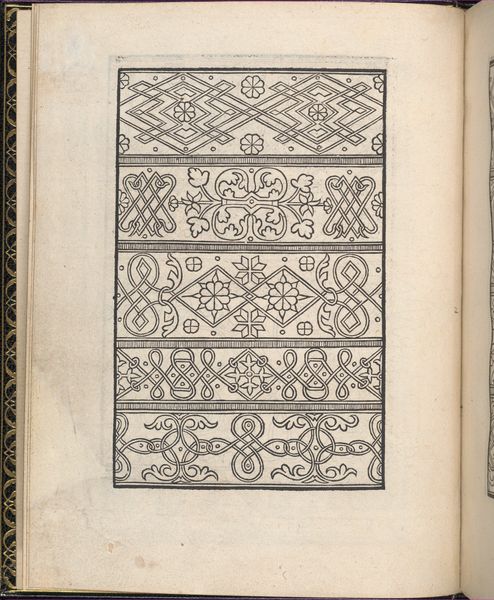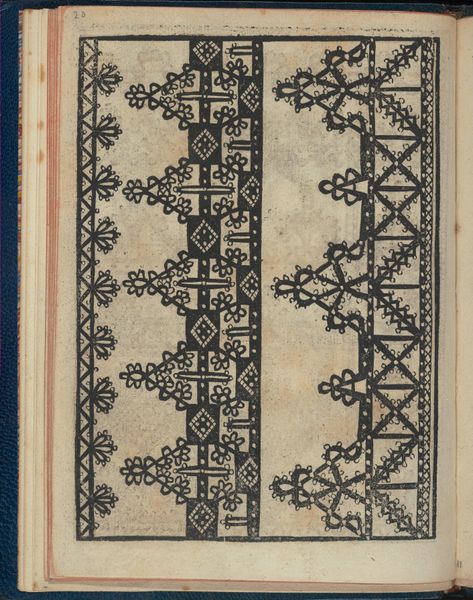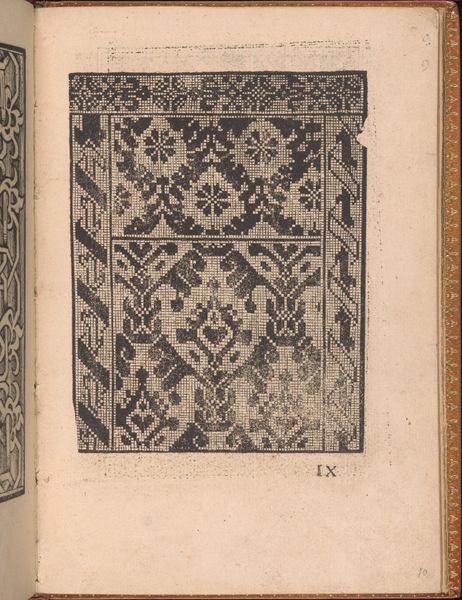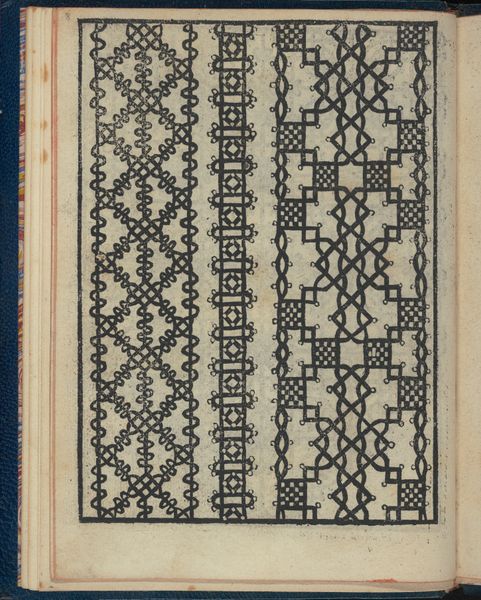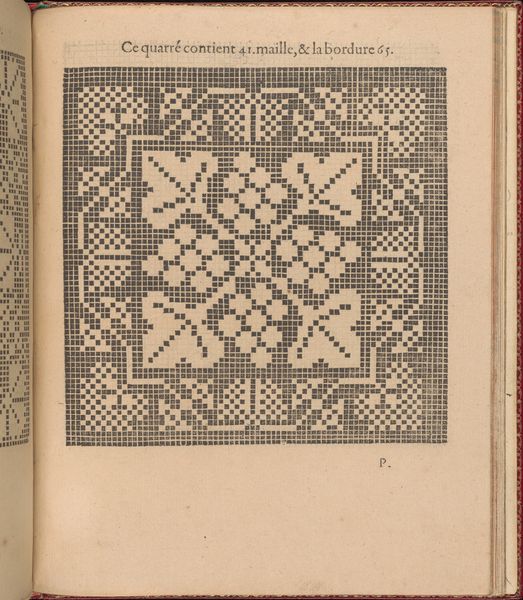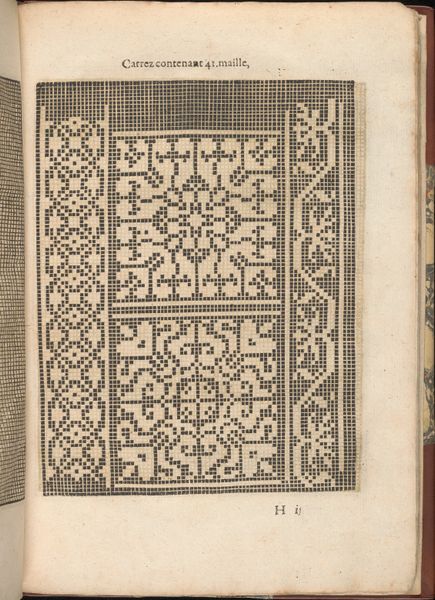
Le Pompe: Opera Nova, page 5 (verso) 1557
0:00
0:00
drawing, ornament, print, engraving
#
drawing
#
ornament
# print
#
book
#
pattern
#
11_renaissance
#
line
#
italian-renaissance
#
engraving
Dimensions: Overall: 8 1/16 x 5 7/8 in. (20.5 x 15 cm)
Copyright: Public Domain
Curator: Looking at this page from "Le Pompe: Opera Nova," dating back to 1557, what captures your immediate attention? This engraving is a pattern book, crafted by Giovanni Battista and Marchio Sessa. Editor: I'm struck by the almost geometric abstraction—it feels both meticulously planned and strangely organic, as if these were patterns found in nature, painstakingly copied. A reminder of humanity’s urge to mimic, order and adorn. Curator: Exactly! Pattern books like this one served a vital social function. Consider the name, "Le Pompe," alluding to ostentatious display, it reveals how art intersected with social ambition. Editor: I see. The repeating motifs...the symmetries, the dense interlocking of forms - they become a form of coded visual language for status. Are there particular motifs which speak more loudly of cultural values at that time? Curator: Lace, primarily created by women, was highly valued and very expensive, it was associated with aristocracy and religious ceremonial garments. It speaks of skillful handicraft in contrast with mechanized forms of manufacture to come. These patterns offered access, in a way—a democratization, if only on paper, of elite aesthetics. What emotional response does the repetition and the linework conjure for you? Editor: I experience something oscillating between meditative calm and stifling rigidity! The patterns are compelling in their own right but also imply conformity; perhaps a kind of “gentle prison" of visual expectation is presented through ornament in the context of this book? It feels poignant given lacemaking itself could consume women's lives so completely. Curator: An interesting tension. It raises the complex position of women, their aesthetic labor as creators and consumers shaping what beauty and status meant, even as larger structures confined them. To contemplate such patterns, then, we aren't simply admiring a design—but glimpsing a micro-history. Editor: Yes. It makes one realize ornament, so easily dismissed, is such an accessible lens into social, creative and intellectual domains. I come away wanting to learn so much more. Curator: And that’s precisely the ongoing role these visual objects perform. These static patterns encourage a reflection on shifting meanings throughout history.
Comments
No comments
Be the first to comment and join the conversation on the ultimate creative platform.
